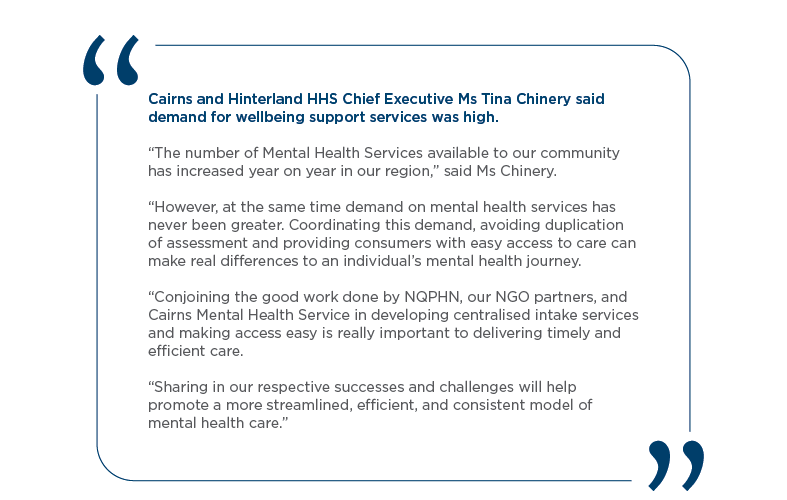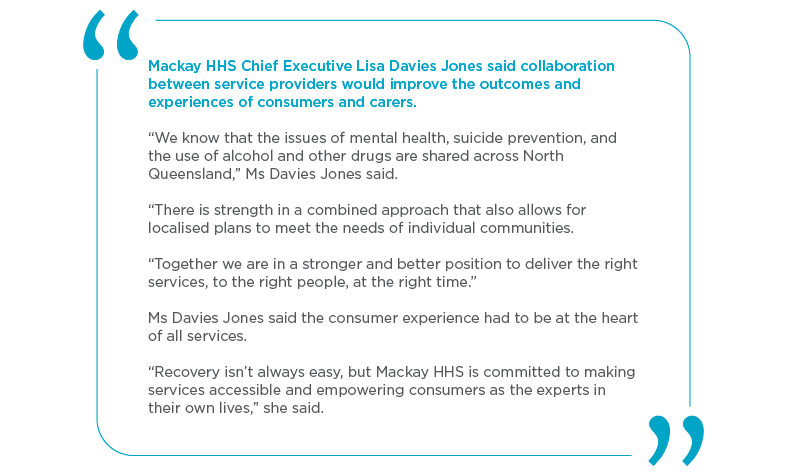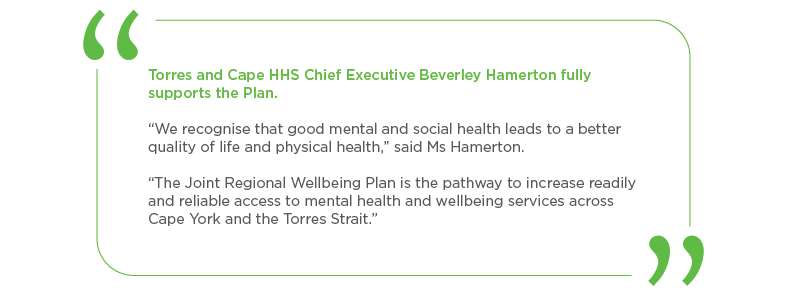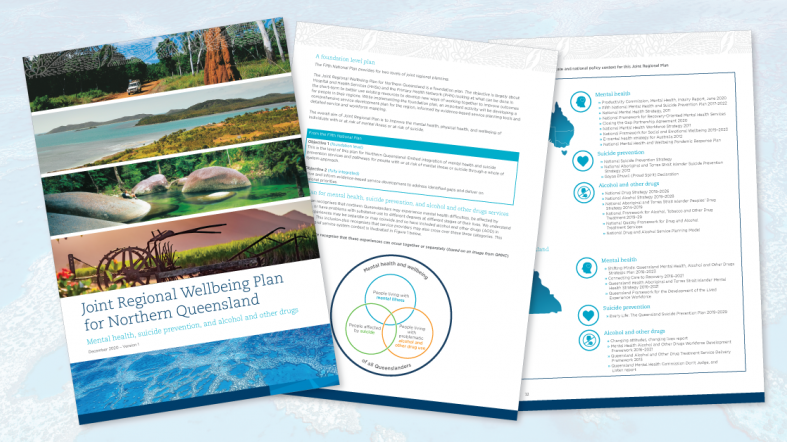The release of the Plan marks a significant and collaborative opportunity for Federal and State systems to plan more responsive, targeted, and localised mental health, suicide prevention, and alcohol and other drugs services for North Queensland residents.
Regional plans have been developed collaboratively by PHNs and HHSs across the nation as one of the key components of the Fifth National Mental Health and Suicide Plan that was endorsed by the Council of Australian Governments in August 2017.
The Plan was developed in close consultation with mental health, suicide prevention, and alcohol and other drugs service providers and consumers from 15 locations across northern Queensland, which identified six priority areas including:
- building workforce capacity, including the peer workforce
- developing Aboriginal and Torres Strait Islander partnerships in healing
- increasing access to and coordination between services
- alcohol and other drugs (AOD) harm reduction
- improving the physical health of people living with mental illness
- suicide prevention.

NQPHN Chief Executive Officer and Steering Committee Co-Chair Robin Whyte said the Plan is a pivotal step towards improving the wellbeing of North Queenslanders through access to the right care, in the right place, at the right time.
“The Joint Regional Wellbeing Plan for Northern Queensland sets out a vision for the wellbeing of residents in northern Queensland, outlining the policy and planning context, and detailing current service provision in the region,” said Ms Whyte.
“It also outlines the process that was undertaken to develop the plan including community and stakeholder engagement that directed much of its content.
“The plan presents a more tailored and person-centred approach to utilising resources and funds, so that mental health and AOD services are developed that are accessible and that meet the needs of the community.
“I’d like to thank our partners and participants for their contributions to the development of this plan, as we work together to help northern Queenslanders to live happier, healthier, longer lives.”

Joint Regional Wellbeing Plan Steering Committee Co-Chair Cara McCormack said the Plan uses evidence-based approaches that are tailored to a North Queensland context.
“The plan identifies global ideas and priorities that now need to be developed into specific and achievable actions that can be implemented in regional areas,” said Ms McCormack.
“To be successful, this plan requires the collaboration of government health agencies plus the hundreds of networks, providers, alliances, and peak bodies that plan and deliver services to support North Queensland residents.
“In the next five years, our aim is that residents will find it easier to access the right service to support their mental health, suicide prevention, and alcohol and other drugs support needs.
“A key activity for the operational groups responsible for implementing the Plan is ensuring local relevance, the guiding involvement of people with lived experience, and engagement across our large and diverse region.”




Development of the Plan commenced in late 2019 and was signed off in December 2020.
The Joint Regional Wellbeing Plan for Northern Queensland can be viewed online at www.nqphn.com.au/about-us/reports-and-plans/joint-regional-wellbeing-plan-northern-queensland
